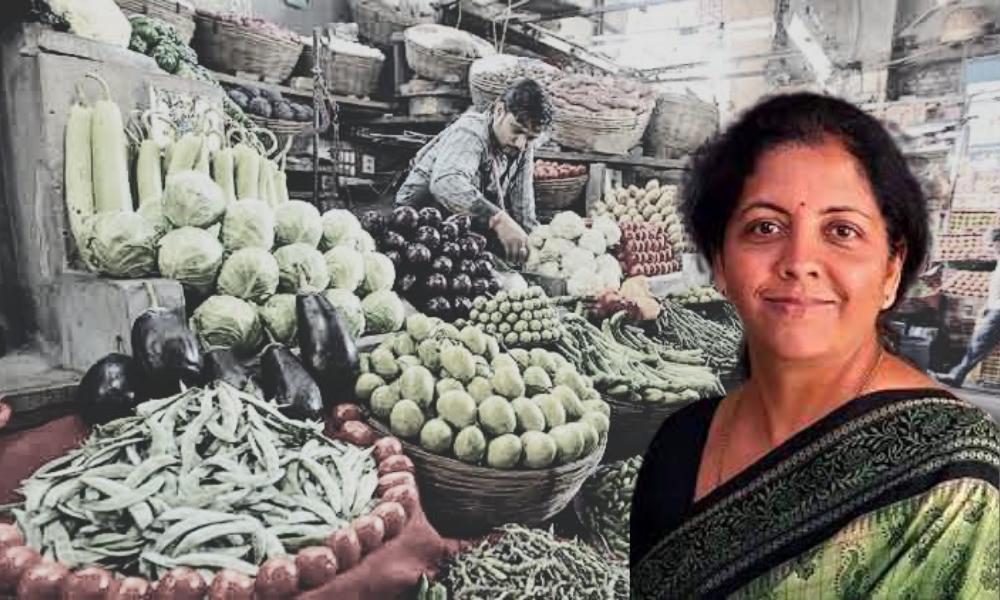
Credits: The Indian Express, Wikimedia Commons
Credit Is Good But Let's Get The Indian Consumer Back On Track
India, 30 Jun 2021 3:49 PM GMT | Updated 1 July 2021 7:36 AM GMT
Editor : Madhusree Goswami |
A mountain girl trying to make it big in the city. She loves to travel and explore and hence keen on doing on-ground stories. Giving the crux of the matter through her editing skills is her way to pay back the journalism its due credit.
Creatives : Ratika Rana
Her primary objective is to inform, promote, educate and cultivate readers through writing.
Finance Minister Nirmala Sitharaman announced an expansion of COVID-related stimulus. However, how it will benefit the common man is yet to be seen.
Recently, Finance Minister Nirmala Sitharaman announced an expansion of COVID related relief schemes. The minister announced measures for sectors like tourism and Medium and Small Enterprises (MSME) that have been hit particularly hard by the pandemic. Relief for healthcare in both public and private sectors was also announced. Funds worth ₹ 1.1 lakh crore were announced to be dispersed. The healthcare sector would get ₹ 50,000 crore while the remaining ₹ 60,000 crore would be released to other sectors. A new Credit guarantee scheme will allow nearly 25 lakh people to avail of loans worth ₹ 1.25 lakh with a 2 per cent leverage on RBI interest rate.
Why Would It Not Work Out?
The lockdown during the first wave of COVID had crippled the economy. When things started opening up and the sun seemed to shine upon small businesses, India fell under the pressure of the catastrophic second wave. An analysis by the Pew Research Centre showed that the pandemic pushed 75 million Indians below poverty in 2020, and the country's middle class shrunk by a whopping 32 million. A report by Live Mint mentions that we lost 7.35 million jobs in April 2021, when the second wave was reaching its peak.
The economic revival of the country can happen if the people have substantial spending power. In trying times like the pandemic we are in today, the ordinary person struggles to secure two square meals a day. This inhibits his spending capabilities to a great extent. Increasing fuel prices are bound to put more burden on peoples' shoulders. Experts believe that this stimulus is not much beneficial to those who experienced shrunken incomes and mounted on debts.
The Reserve Bank of India data showed that the Non-Performing Assets (NPAs) of Public Sector Banks (PSB) showed a 21-time jump from 2008-14 and 2014-20. In its bi-annual financial report, the bank said that NPAs might increase to as high as 14.8 per cent in September, from what was 7.5 per cent in September 2021.
What Would Be Beneficial?
There is nothing that the Indian consumer would want more than cash in hand. Stable liquidity in the market would make the common person trust the government's policies. For instance, Tamil Nadu CM MK Stalin released ₹ 341 crore so that all ration cardholders can be benefitted with ₹ 4,000 each. Also15 kg of rice will be provided.
The Chief Minister also mentioned that the state government will add more beneficiaries to the healthcare scheme. Additionally, ₹ 3 lakh would be allocated to children who lost their parents to COVID; and women who lost jobs during the pandemic would be provided with loans to start small businesses.
The Way Ahead
While credit might be a good option for MSMEs and other well-to-do firms, it might not benefit the regular Indian consumer as much. The liability of returning the loan with an additional interest rate weighs down the morale of the public.
Reducing prices of everyday goods, keeping a check on the fuel prices and making the economy more liquid can benefit the general public more than any COVID related relief scheme.
Also Read: Eight New Schemes To Boost Economy, Focus On Healthcare, Tourism Sector: FM Sitharaman
 All section
All section














